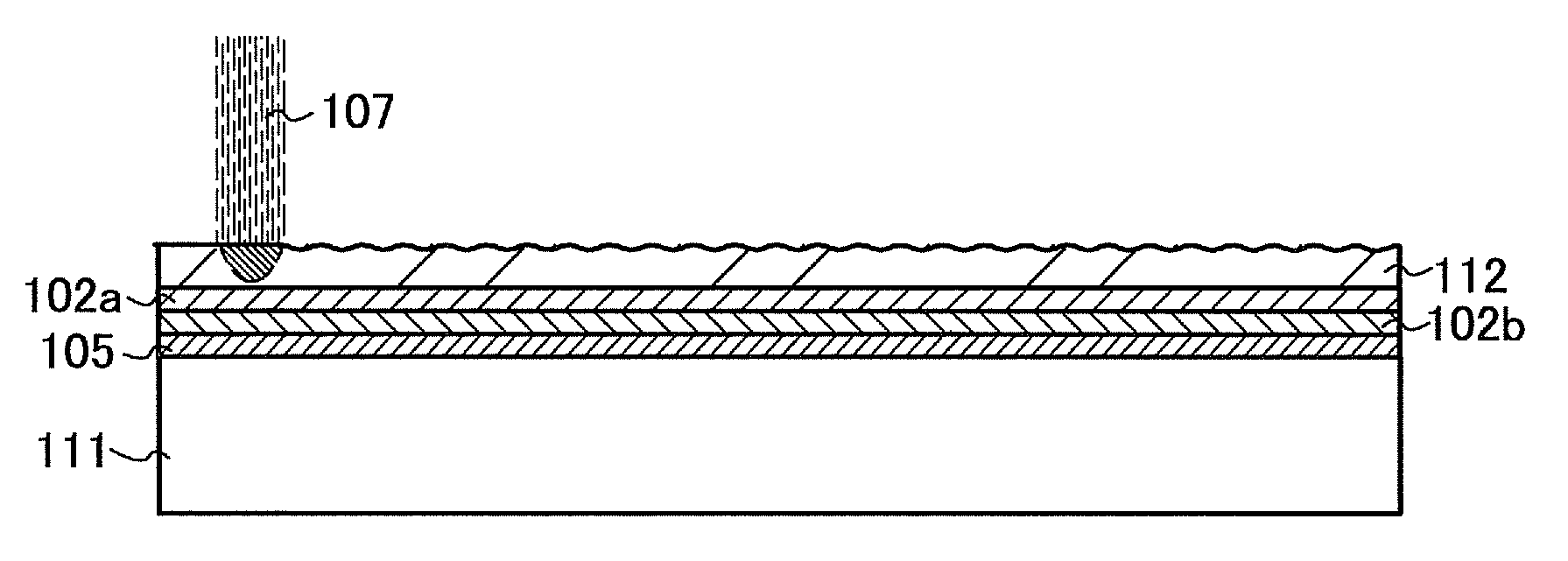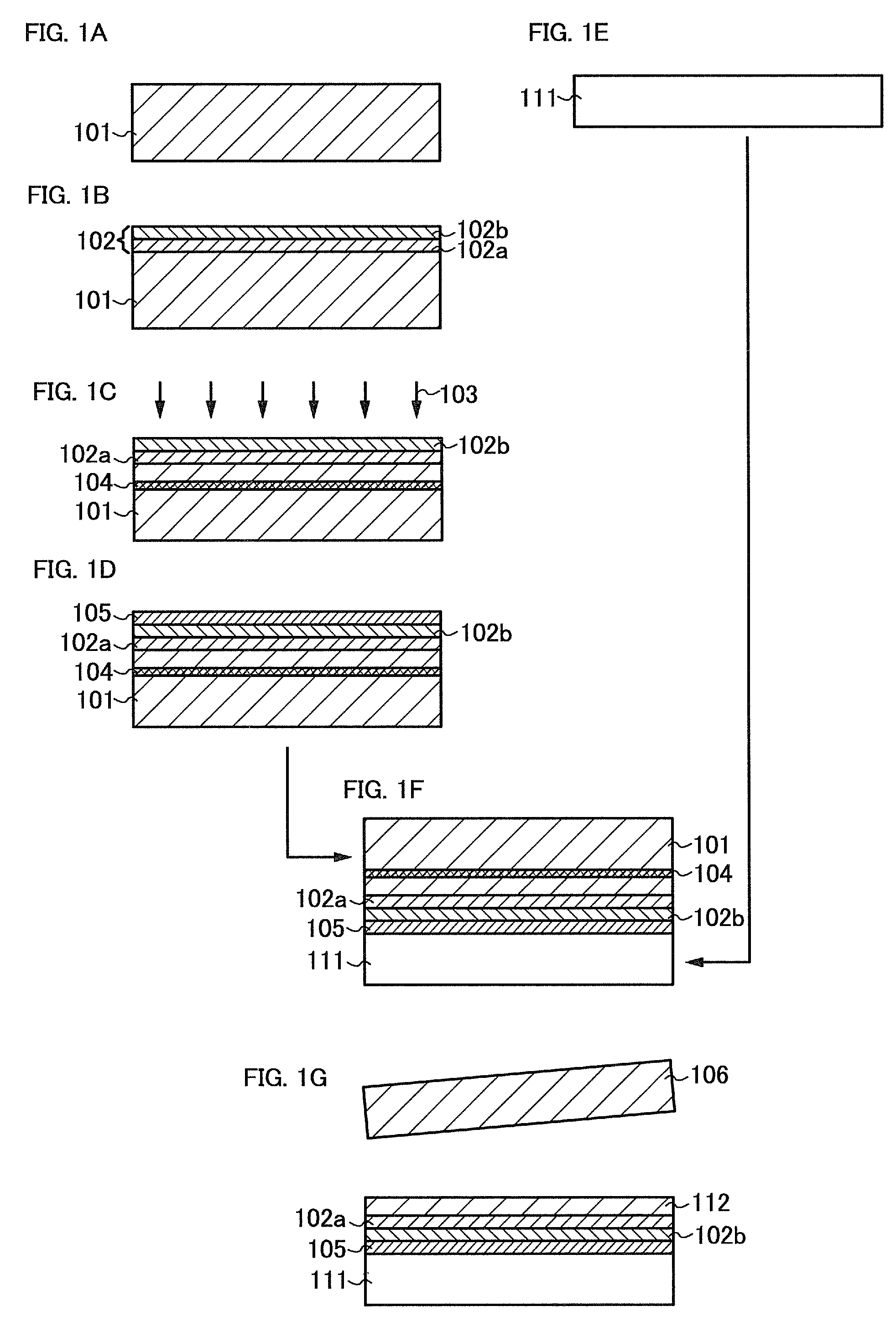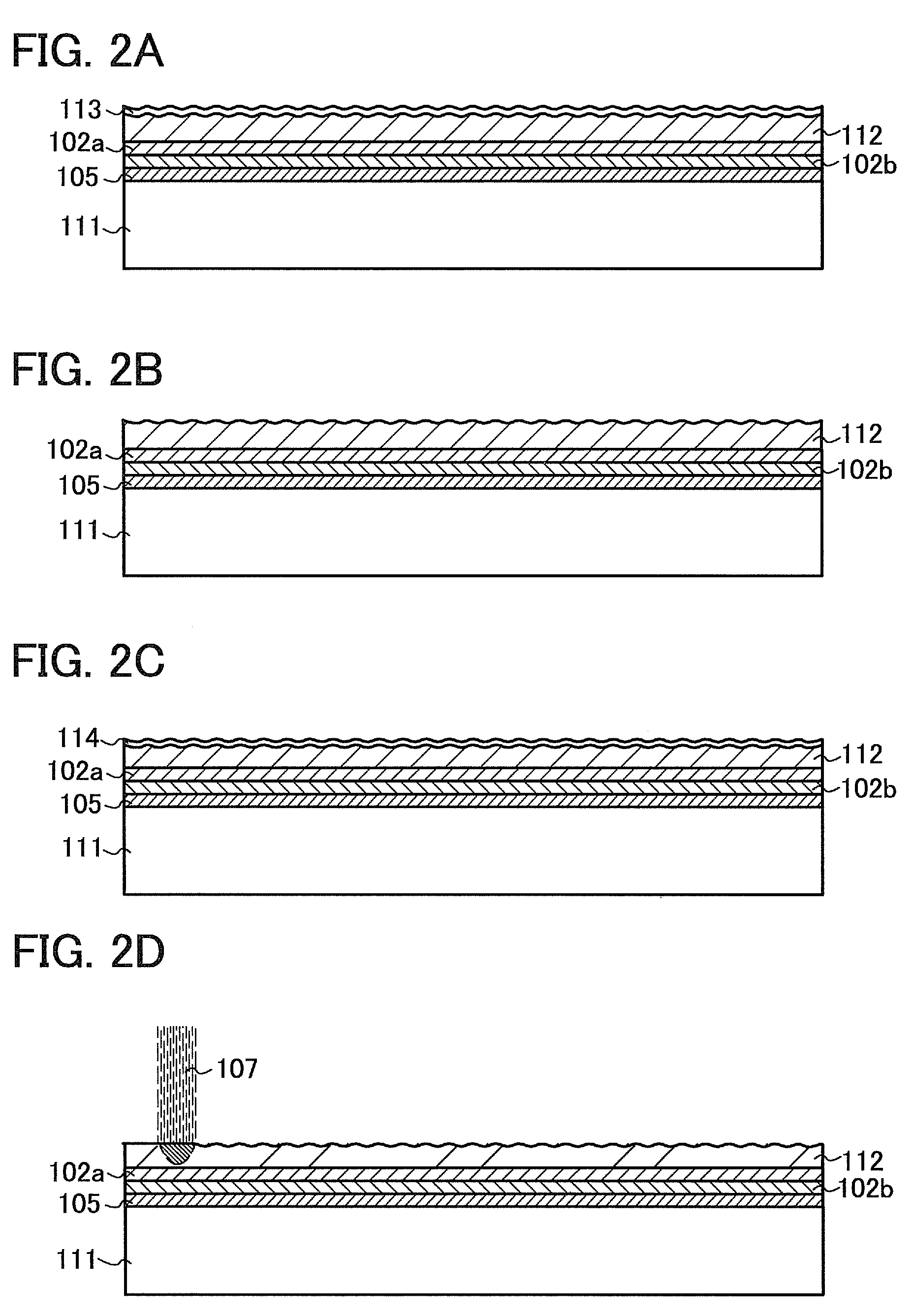Method for manufacturing SOI substrate
a technology of soi substrate and substrate layer, which is applied in the direction of semiconductor/solid-state device manufacturing, basic electric elements, electric apparatus, etc., can solve the problems of defects or damage of crystal defects, and deterioration of surface planarity, so as to reduce surface roughness, prevent defects or damage, and remove defects and damage of a surface
- Summary
- Abstract
- Description
- Claims
- Application Information
AI Technical Summary
Benefits of technology
Problems solved by technology
Method used
Image
Examples
embodiment 1
[0036]A method for manufacturing an SOI substrate will now be described with reference to drawings in this embodiment. In the method, a single crystal semiconductor substrate is cleaved to be separated into a single crystal semiconductor layer which is attached to a supporting substrate and a single crystal semiconductor substrate, and a surface of the single crystal semiconductor layer which is attached to the supporting substrate is subjected to first etching treatment and second etching treatment, and then irradiated with laser light. Further, this embodiment also describes a method for manufacturing an SOI substrate, an object of which is to provide a single crystal semiconductor layer for a substrate with a low upper temperature limit, such as a glass substrate.
[0037]First, a single crystal semiconductor substrate 101 is prepared (see FIG. 1A). The single crystal semiconductor substrate 101 is processed into a desired size and shape. The single crystal semiconductor substrate 1...
embodiment 2
[0095]A structure of an SOI substrate which is different from the structure of the SOI substrate described in Embodiment 1 will now be described in this embodiment. Note that in this embodiment, the same reference numerals denote the same parts as in Embodiment 1, and a detailed description is omitted.
[0096]A structure in which the single crystal semiconductor layer 112 is formed over the supporting substrate 111 with the insulating film 102b and the insulating film 102a interposed therebetween is illustrated in FIG. 4. First, the insulating film 102a is formed over the single crystal semiconductor substrate 101. Then, the fragile region 104 is formed in the single crystal semiconductor substrate 101 by ion beam irradiation. Then, the insulating film 102b which serves as a bonding layer is formed over the insulating film 102a. After the insulating film 102b is formed, the single crystal semiconductor substrate 101 and the supporting substrate 111 are attached with the insulating fil...
embodiment 3
[0112]In this embodiment, a method for manufacturing a complementary metal oxide semiconductor (CMOS) is described with reference to FIGS. 7A to 7E and FIGS. 8A to 8D as an example of a method for manufacturing a semiconductor device including a high performance and highly reliable semiconductor element, with high yield. Note that repeated description for the like portions or portions having like functions to the portions in Embodiments 1 and 2 are omitted.
[0113]In FIG. 7A, the insulating film 102 and the single crystal semiconductor layer 112 are formed over the supporting substrate 111. Note that, although an example in which the SOI substrate having the structure illustrated in FIG. 4 is used is described here, an SOI substrate having another structure described in this specification can be used.
[0114]The single crystal semiconductor layer 112 is separated from the single crystal semiconductor substrate 101 and is subjected to planarization treatment. The planarization treatment ...
PUM
 Login to View More
Login to View More Abstract
Description
Claims
Application Information
 Login to View More
Login to View More - R&D
- Intellectual Property
- Life Sciences
- Materials
- Tech Scout
- Unparalleled Data Quality
- Higher Quality Content
- 60% Fewer Hallucinations
Browse by: Latest US Patents, China's latest patents, Technical Efficacy Thesaurus, Application Domain, Technology Topic, Popular Technical Reports.
© 2025 PatSnap. All rights reserved.Legal|Privacy policy|Modern Slavery Act Transparency Statement|Sitemap|About US| Contact US: help@patsnap.com



